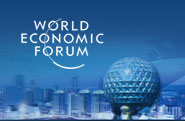Global trade rebound boosts growth in Asia, Pacific: ADB report
MANILA — Economic growth prospects in developing Asia for the rest of 2017 and 2018 are looking up, bolstered by the revival of world trade and strong momentum in China, the Asian Development Bank (ADB) said in an updated report released Tuesday.
In an updated Asian Development Outlook (ADO) 2017, the Manila-based bank predicted the region to expand by 5.9 percent in 2017 and 5.8 in 2018.
The region's gross domestic product (GDP) growth of 5.9 percent for 2017 is a slight uptick from 5.8 percent in 2016 and 0.2 percentage points higher than the earlier forecast.
"The region is benefitting from a rebound in global trade, which is supported by firm recovery in the major industrial economies, and strong domestic investment demand," the report said.
It said the dollar value of the region's exports surged by 11 percent in the first months of 2017 over the same period in the previous year, and the value of its imports rose by 17 percent.
"The pickup follows two consecutive years of contracting export values caused by falling commodity prices and subdued external demand for manufactures. Excluding China, the eight largest regional developing economies saw real manufacturing exports rebound," the report said.
Moreover, it said that growth in China that exceeds expectations is also lifting regional prospects.
Growth has picked up slightly more than expected in China, the report noted. China's GDP growth is now forecast 0.2 percentage points higher, at 6.7 percent in 2017 and 6.4 percent in 2018, with growth led by expansionary fiscal policy and unanticipated external demand.
"Supply-side reform is moving forward, but eventual success hinges on a careful balancing of the role of the market and the state during the current economic transition," the report said.
Yasuyuki Sawada, the ADB chief economist, stressed the need for countries in developing Asia to take advantage of favorable short-term economic prospects to implement productivity-enhancing reforms, invest in badly needed infrastructure, and maintain sound macroeconomic management to help increase their long-term growth potential.
The report also read that recovery in the industrial economies beats earlier expectations. The forecast for aggregate growth in the United States, the euro area, and Japan is also revised up by 0.1 percentage points to 2.0 percent for both 2017 and 2018.
"With rising consumption, US growth in the second quarter more than doubles the first quarter pace. Growth in Japan exceeded expectations, spurred by a combination of improving consumer confidence and business sentiment," the report said.
Recovery in the euro area appears to be broadly supported by expansive fiscal and monetary policies, easing political uncertainty, and robust market confidence, which should keep growth momentum going through 2018, the report said.
With sluggish consumption and dampened business investment, the report predicted India's GDP to dip from 7.1 percent in 2016 to 7.0 percent in 2017.
"Demonetization last November suppressed small businesses and private credit, and adjustment to the new national goods and services tax muted manufacturing. However, short-term disruption is expected to dissipate, allowing these initiatives to generate growth dividends over the medium term. Expansion is forecast to accelerate to 7.4 percent in 2018," the report added.
For the part of Southeast Asia, ADB has upgraded its forecast for Singapore and Malaysia which were boosted by rising electronics exports, and for the Philippines, on the strength of higher domestic demand. Projections for Indonesia and Thailand are retained as earlier expectations, but weakness in mining triggers a slight downward adjustment for Vietnam.
"Southeast Asia as a whole is expected to grow by 5.0 percent in 2017, or 0.2 percentage point higher than ADO 2017 forecasts, and by 5.1 percent in 2018," the report said.
Risks to the region have become more balanced. "Loose fiscal policy in the US and lower oil prices are potential upside risks to the region, while downside risks include tighter global liquidity, economic disruption from a geopolitical event, or a weather-related disaster," the report said.
While the region remains better prepared for potential risks from the US unwinding its quantitative easing, it said high debt levels in Asia and the Pacific now pose a risk to financial stability.
"Because long-term interest rates in many Asian economies are closely linked to those in the US, policy makers need to strengthen their financial positions further and monitor debt levels and asset prices," the report said.

























